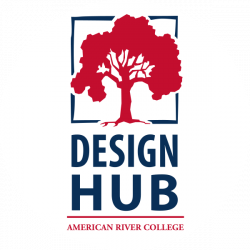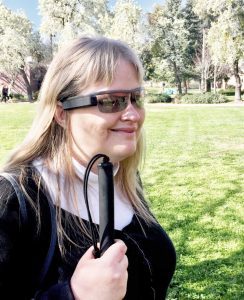The Design Hub here at American River College is a strong proponent of multidisciplinary collaboration. At the Hub, team-building across all planes is valued and celebrated. It is a place where the arts and sciences come to eclipse, and the outcome is something truly spectacular.

Here, we meet Erika Gonzalez to learn more about about her job as an artist for the Design Hub. Her current project: to paint the cell membrane models for the Science Department. These little cell membranes required the help of Erika’s excellent painting skills, 3D printing, the Science Department, and 3D modelers to create the cell membrane structure. Erika is the lucky intern who was chosen to complete this project. ARC’s Science Department ordered the models of the cell membranes from Randy Schuster, the head supervisor of all the interns that make up the Design Hub. He has made sure to connect with nearly every department on campus, and runs the Design Hub in such a way that allows ARC’s campus to benefit from all of the hard work, talent, and innovation that comes out of the Hub.

The diagram of the model was sent from the Science Department to the 3D modeling interns at the Design Hub. They then transformed the structure into a file format that the 3D printers could handle. From there, the files were transformed into printable structures, and were given to Erika to paint and bring to life. She had to paint each minute crevice in the same way as the 3D printed grain, paying a lot of attention to detail. She is painting the cell membranes with acrylic paint, then sealing it with Mod Podge to prevent the acrylic paint from chipping. This project will be housed at the Design Hub lab room 311, and it will be on display in the Science classrooms. It will also be used as a class reference for the Science Department. The Design Hub is very proud of the collaborative efforts of our many talented 3D printing modelers, our artist intern Erika, as well as the Science Department. When art marries science and design, the possibilities are truly endless!




